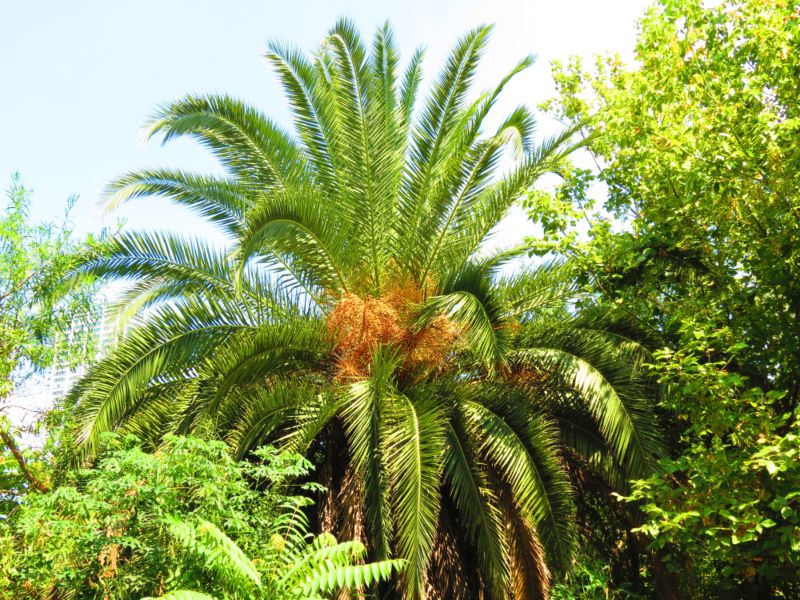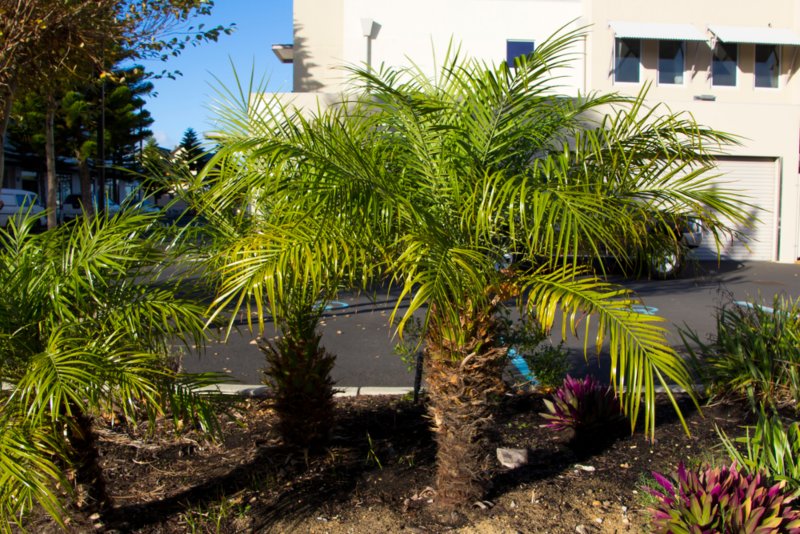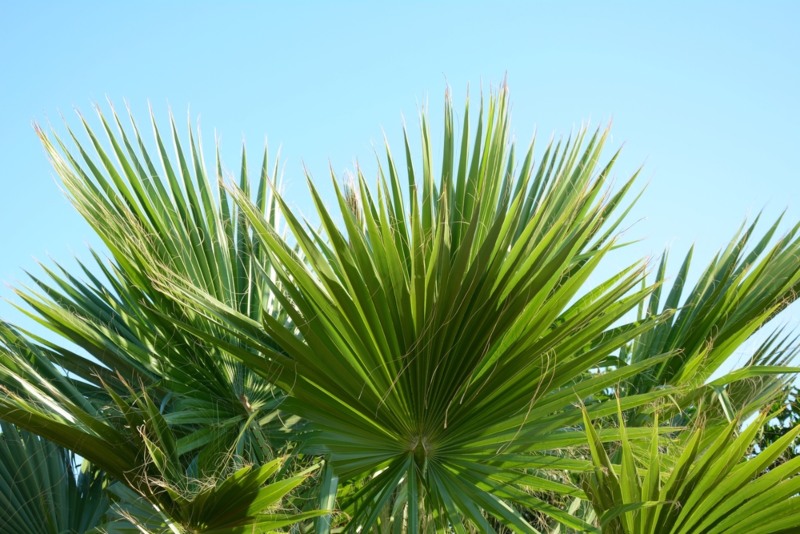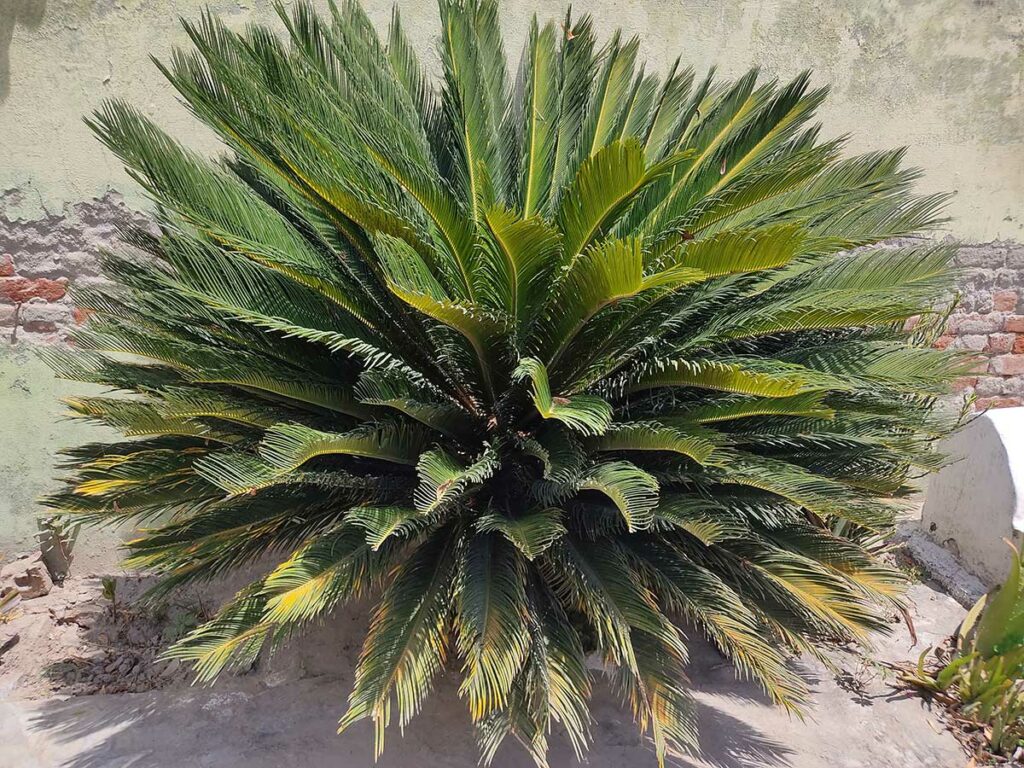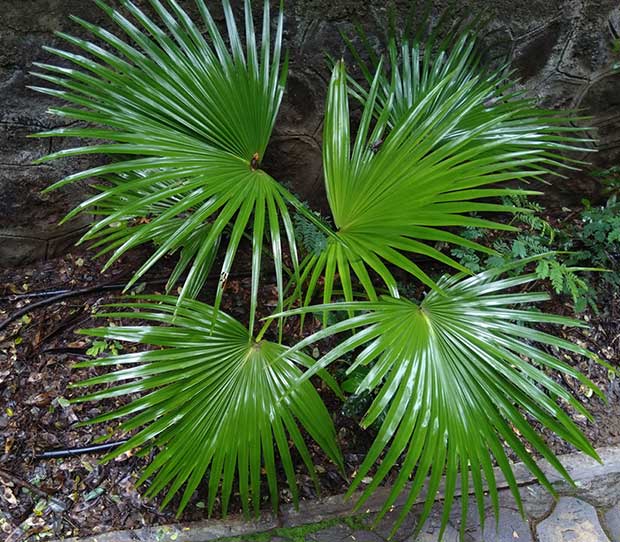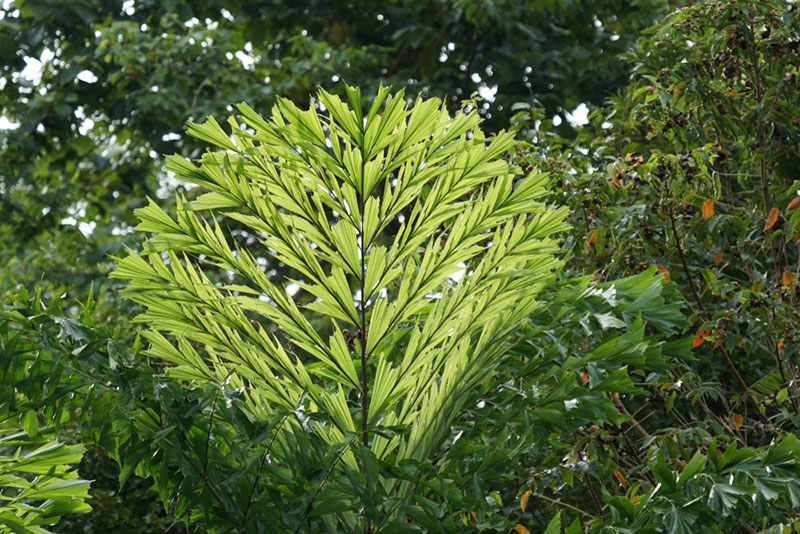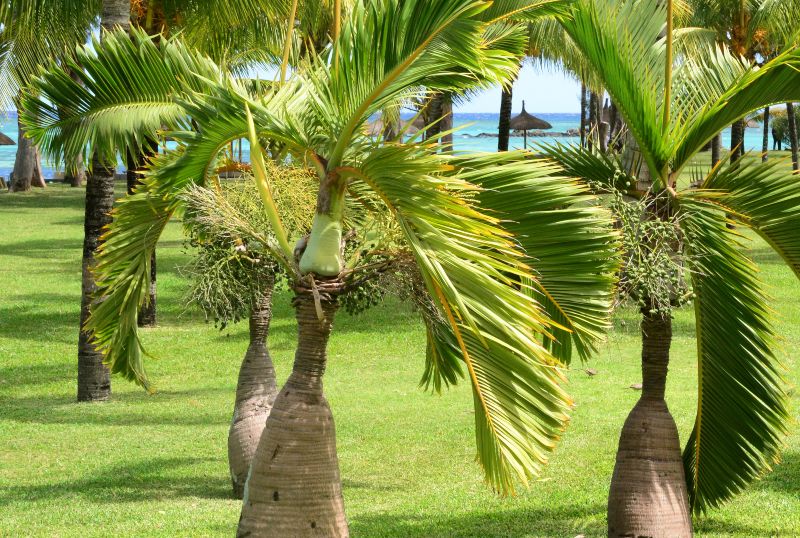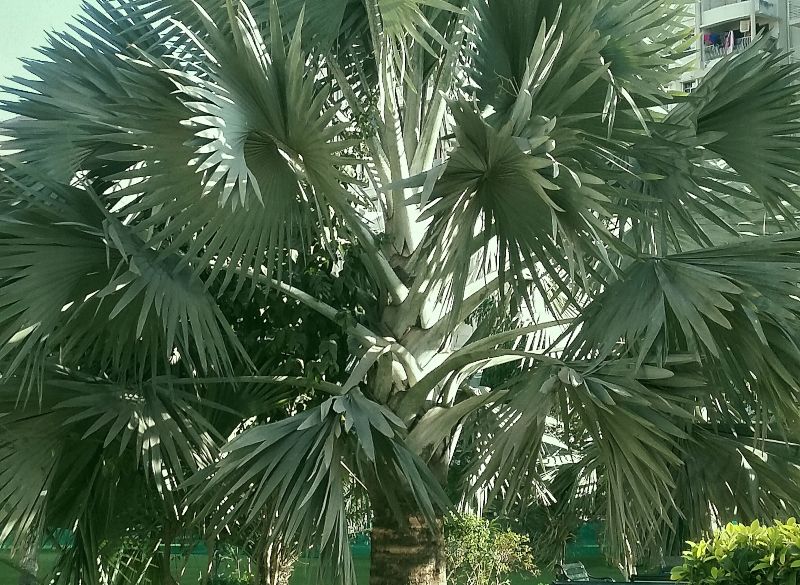
The Latania palm, also sometimes known as the latan palm or simply Latania, is a genus of palm plants originating from the Mascarene Islands, near Madagascar. The genus comprises three species, most commonly known as the blue latan palm, red latan palm, and yellow latan palm.
These three members of the Latania genus are native to the three Mascarene Islands, Mauritius, Rodrigues, and Reunion. The volcanic archipelago from which they originated enjoys a tropical climate with warm temperatures throughout the year and moderate rainfall.
The origin of the Latania palms makes them unsuitable for cooler climates, but in warmer tropical and subtropical regions, they are effortless to grow. They look beautiful, grown individually in solitary stands or as part of a larger canopy.
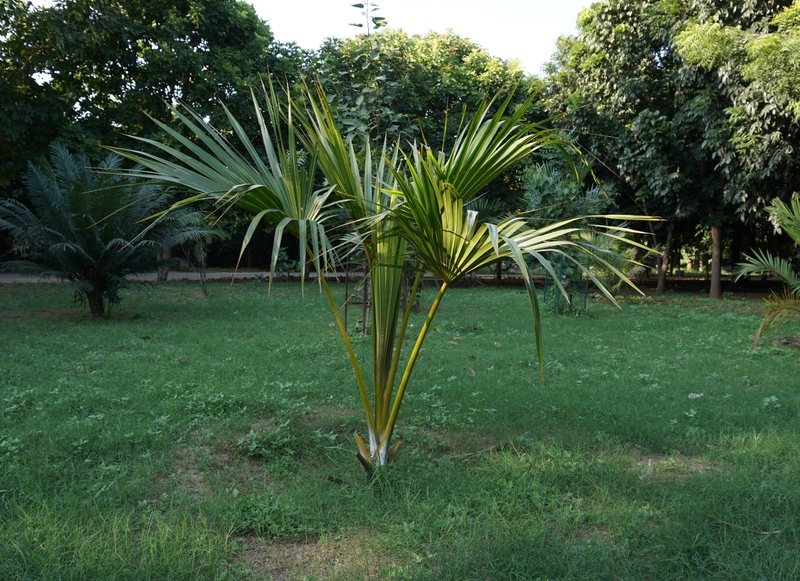
Outdoors, Latania palms can grow up to 35 feet tall but can grow indoors as well. Their giant ornamental fan fronds can grow up to 12 feet long and several feet wide. These are plants that demand to be noticed.
They produce flowers in spring and summer, with male and female flowers growing on separate plants. Pollinated flowers will produce oblong greenish-brown fruits that contain pits that house the seeds.
You can propagate those seeds at home by scratching the surface, soaking them in water, and planting them in a deep pot. Though this process takes several months, it will produce a hardy plant that can take full sun as soon as you move it outside.
| Botanical Name: | Latania loddigesii |
| Common Name(s): | Latania, latan palm, latania palm |
| Plant Type: | Palm Tree |
| Mature Size: | 6-8 m. (20-25 ft.) tall; 3-5 m. (10-15 ft.) wide |
| Sun Exposure: | Full sun to partial shade |
| Water Needs: | Low |
| Soil Type: | Clay, Loam, Sand |
| Soil pH: | Acid, Alkaline, Neutral |
| Maintenance: | Low |
| Flower Color: | Yellow |
| Hardiness Zones: | 10-11 |
| Toxicity: | Not toxic |
Latania Palm Care
Latania palms are among the easiest plants to grow in suitable climates, making them extremely popular. Native to hardiness zones 10 and 11, these plants love lots of direct sunlight and heat and the occasional downpour to thrive.
The only thing the Latania palm can’t tolerate is cold. Their native habitat is tropical and consistently hot, and that’s exactly what the Latania palm needs. Temperatures below 35 degrees Fahrenheit will distress them, so keep them indoors if your region is prone to frost.
If you think it sounds like the Latania palm would be right at home on the beach, you’re correct. These are excellent tropical plants due to their love of full, direct sunlight and lots of heat, plus moderate drought and salt tolerance.
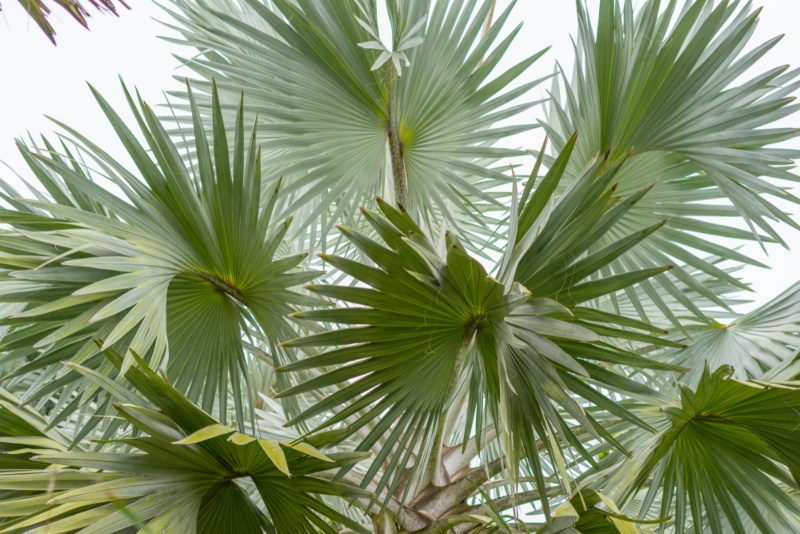
Light
Latania palms are native to the warm climates of the western Indian Ocean in the Mascarene Islands. This tropical region boasts plentiful sun, and your Latania palm will want the same. These plants are happiest where they can soak up the sun all day.
Water
Like many tropical palms, Latania palms are relatively drought tolerant. They may need the occasional soaking as juvenile plants to start, but they can tolerate reasonably long periods of drought once established.
Temperature and Humidity
Latania palms are poorly suited for cooler climates. They should be kept indoors in regions that see temperatures below 35 degrees Fahrenheit, as frost can damage them.
They thrive best in hardiness zones 10 and 11, preferring lots of heat and not too much moisture. Plus, they can tolerate a decent amount of salt in the air, making them perfect seaside plants.
Soil
Tropical plants like the Latania palm enjoy a good soaking now and then but don’t like to sit in water for long. They do best in well-draining soils like loam and sand that allow their roots to take up just enough water without getting mushy.
Fertilizer
Depending on your soil’s quality, your Latania palm may enjoy a good quality palm fertilizer. Feed it twice a year during the growing season to avoid any potential nutrient deficiencies.
Are Latania Palms Toxic?
Latania palms, like most palm trees, are not considered toxic to humans or pets.
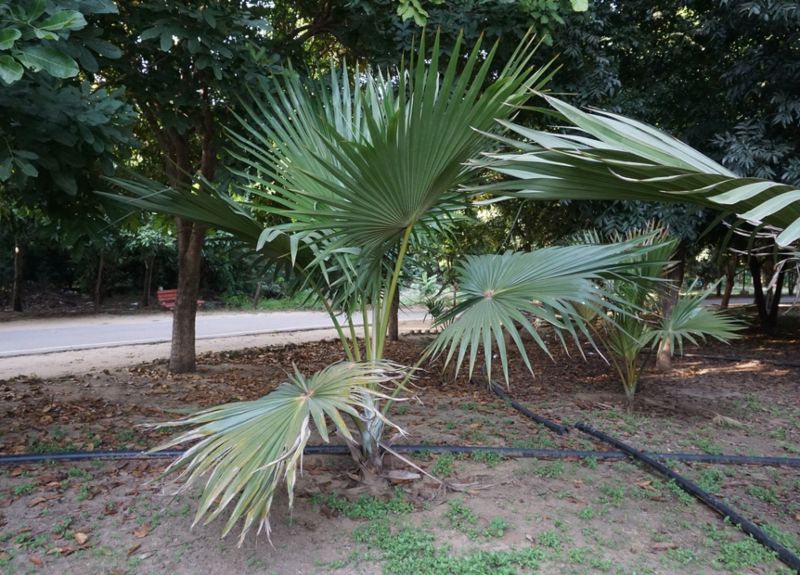
Growing From Seed
Latania palms can be propagated from seeds in large pots, at least 15 cm (6 inches) in diameter. Scratch the surface of the seeds to make them permeable, then soak them in water before planting.
At the start of germination, seeds send out a root called a “sinker” that tests the depth of the soil before seedlings will appear. If the pot is not deep enough, germination will stop. If the sinker detects that there is enough room to grow, germination continues. The sinker first appears 1-3 weeks after planting, and seedlings appear after about 5 weeks.
Pruning
Latania palms should only be pruned as needed to remove diseased, damaged, or dying fronds. They grow a fixed number of fronds each year and will not grow more if others are pruned.





